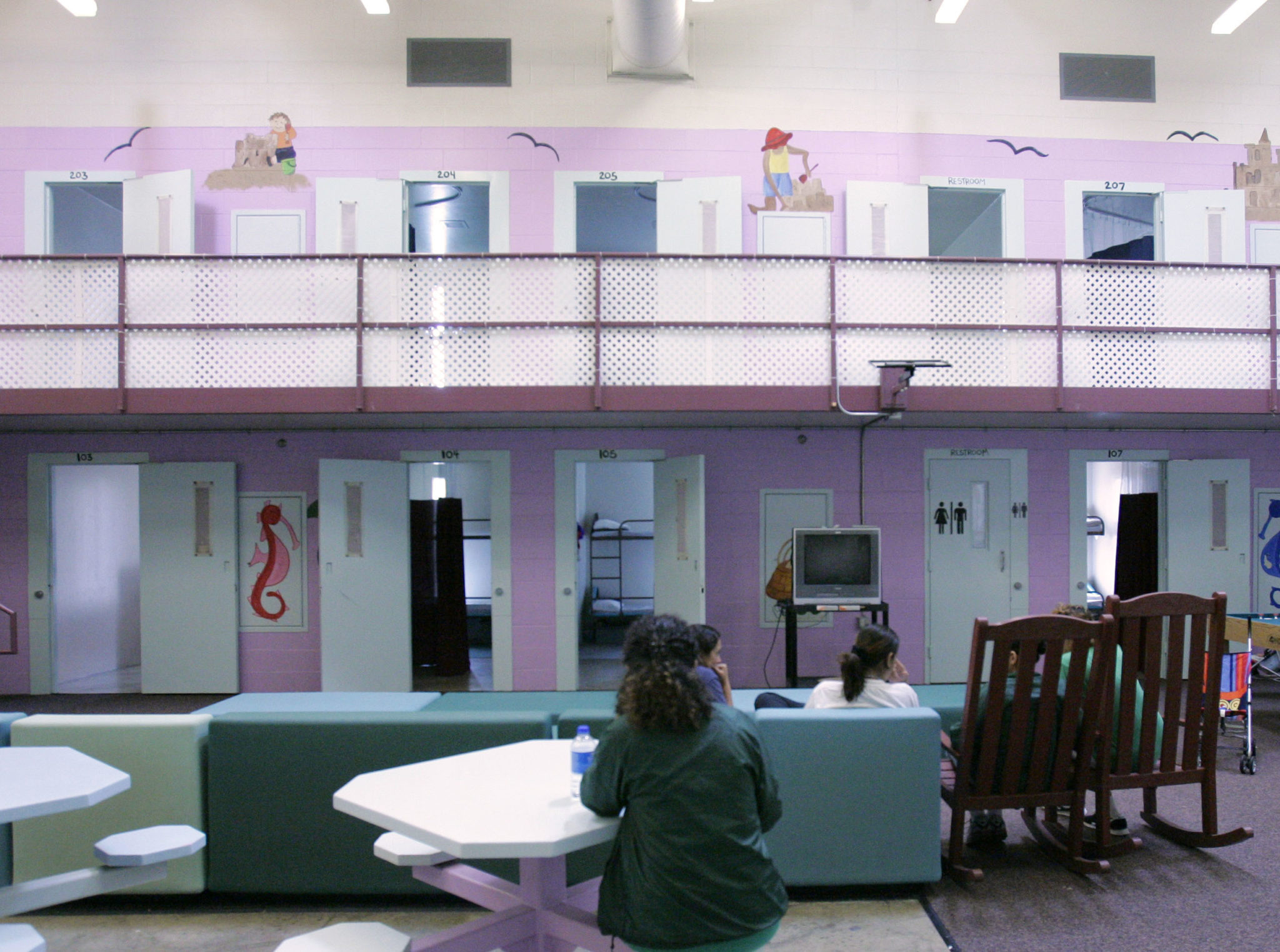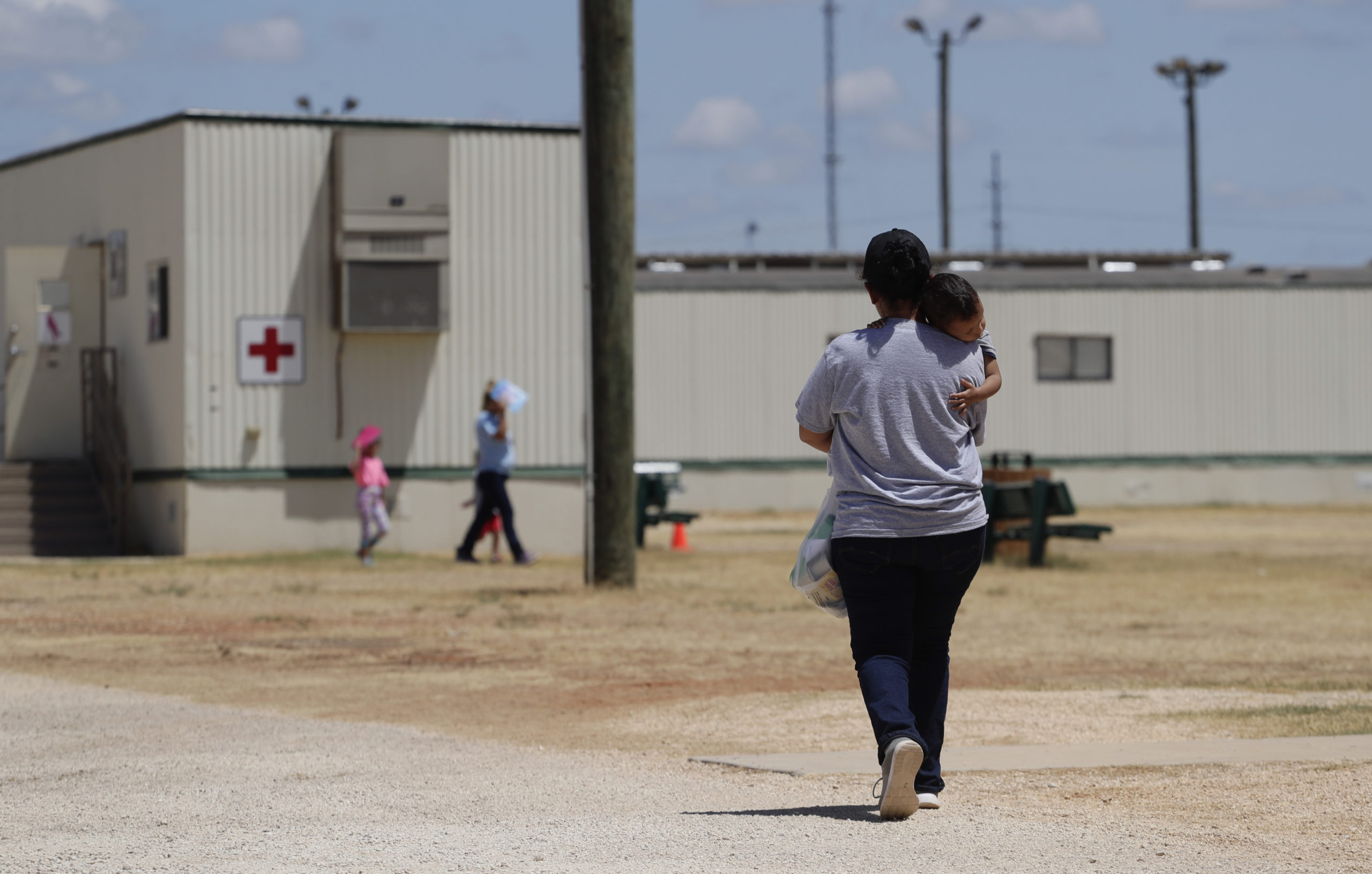
Report: Sexual Assault is Common in Immigrant Prisons, but Survivors Aren’t Getting Help
Only three of 23 rape crisis centers serving areas where ICE detention centers are located reported providing therapy or other services to detainees.

We’ve known for a while that sexual assault is likely widespread in immigrant lockups. Adult detainees filed 1,224 sexual abuse complaints with the Department of Homeland Security between 2010 and September 2017. And in the past five years, thousands of immigrant children who arrived alone at the border have also reported abuse in federal custody. Now, in a new report centering on Texas detention facilities, advocates say that the government is not only failing to protect those in its custody, it is falling short of providing them with support services required by law.
According to a Texas Association Against Sexual Assault (TAASA) survey published last week, rape crisis centers and advocates have “very limited interaction” with detention facilities operated by ICE, Customs and Border Protection (CBP), or the Office of Refugee Resettlement. Of the 23 surveyed Texas rape crisis centers near ICE facilities, only three reported providing therapy or other services to victims. None of the eight participating children’s advocacy centers near CBP facilities said they worked with law enforcement to investigate claims of child abuse.
The report also found that the majority of detainees who were referred to rape crisis centers were sexually assaulted on their way to the United States, not while detained. The finding raised eyebrows. “Given the reportedly high prevalence of sexual violence within immigration detention facilities, this appears to reflect a bias in the institutional response in favor of survivors assaulted by coyotes [smugglers], but against survivors assaulted inside government facilities,” the authors wrote.
Katherine Strandberg, a criminal justice analyst with TAASA, says the group started working on the report at the height of the family separation crisis in 2018. “When all the kids started being detained and separated [at the border], we knew it was a recipe for sexual violence to happen,” Strandberg says. “In the last year, we found out that’s true … and nothing is being done to deal with this trauma even though we have the resources.”
In response to an Observer inquiry, an ICE spokesperson said that outside victim services must be requested by the detainees, who receive information on how to report sexual abuse via postings, orientation materials, and the ICE National Detainee Handbook. CBP didn’t provide a comment.
“Nothing is being done to deal with this trauma even though we have the resources.”
The report states that outside support service providers are generally ready to provide counseling, but face many barriers. Without cooperation from the facilities, it is difficult to communicate with victims or ease a survivor’s reluctance to make a complaint.
In the four years that Maribel Arrondo has been a sexual assault services coordinator with the Purple Door, a Corpus Christi nonprofit, the organization has never received a request for services from ICE or the nearby CBP facility. In the past, she told the Observer, they were only able to offer training to staff at the Bokenkamp Children’s Shelter, rather than directly support the kids detained there. “We serve on the basis of when we get a notification from detention, juvenile, or state prison,” Arrondo says. “All it would take would be a phone call, but that has never occurred. I’m not sure why.”
In 2003, Congress passed the Prison Rape Elimination Act (PREA) to develop standards for preventing and responding to sexual abuse in prisons. The law was extended to immigration detention in 2014. Among the zero-tolerance policy’s provisions is a requirement that facilities “use available community resources and services to provide support to detainees” and establish agreements with “organizations that provide legal advocacy and emotional support.” Detention centers must also inform detainees about local or national organizations that can help them, even if their allegations haven’t been substantiated.
The TAASA report shows, however, that facilities housing immigrants are by and large failing to utilize community-based support services, even when signed agreements are in place. Hope Alliance, a Round Rock organization serving domestic and sexual violence survivors, signed an agreement with ICE four years ago to assist detainees at the T. Don Hutto Residential Center in Taylor. According to the organization’s vice president, Patty Conner, they have never had a referral. “Given that the [agreement] is in place, I would expect to get calls,” Conner says. “That would allow for services to be sought and rendered in an appropriate and confidential way as opposed to just something that marks a checkbox.”
Allegations of sexual assault inside the Hutto lockup go back to the mid-2000s, leading advocates to push for the facility’s closure and lawmakers to call for increased accountability. In 2017, Laura Monterrosa, a 23-year-old asylum-seeker from El Salvador, was put into solitary confinement and threatened with deportation after speaking out about being sexually assaulted by a female guard. Authorities didn’t refer Monterrosa and another woman with similar allegations to outside help, but conducted an internal investigation that found the allegations were unsubstantiated; afterward, lawmakers questioned whether Hutto was flaunting PREA requirements. Last year, a PREA audit concluded that Hutto met the standards, including for access to outside confidential support services.
Without requests from administrators at the facilities housing immigrant survivors of sexual assault, short-staffed nonprofit leaders say they are limited in what they can do. As the report suggests, service providers can contact detention center administrators to make sure that detainees have access to a free crisis hotline and educational material. But fear of retaliation and threats of deportation are often strong deterrents, advocates say.
“The immigrant detention system is fundamentally dangerous,” Strandberg says. “This is the kind of community-level public health crisis that we’re not engaging with at all, and we need to.”


